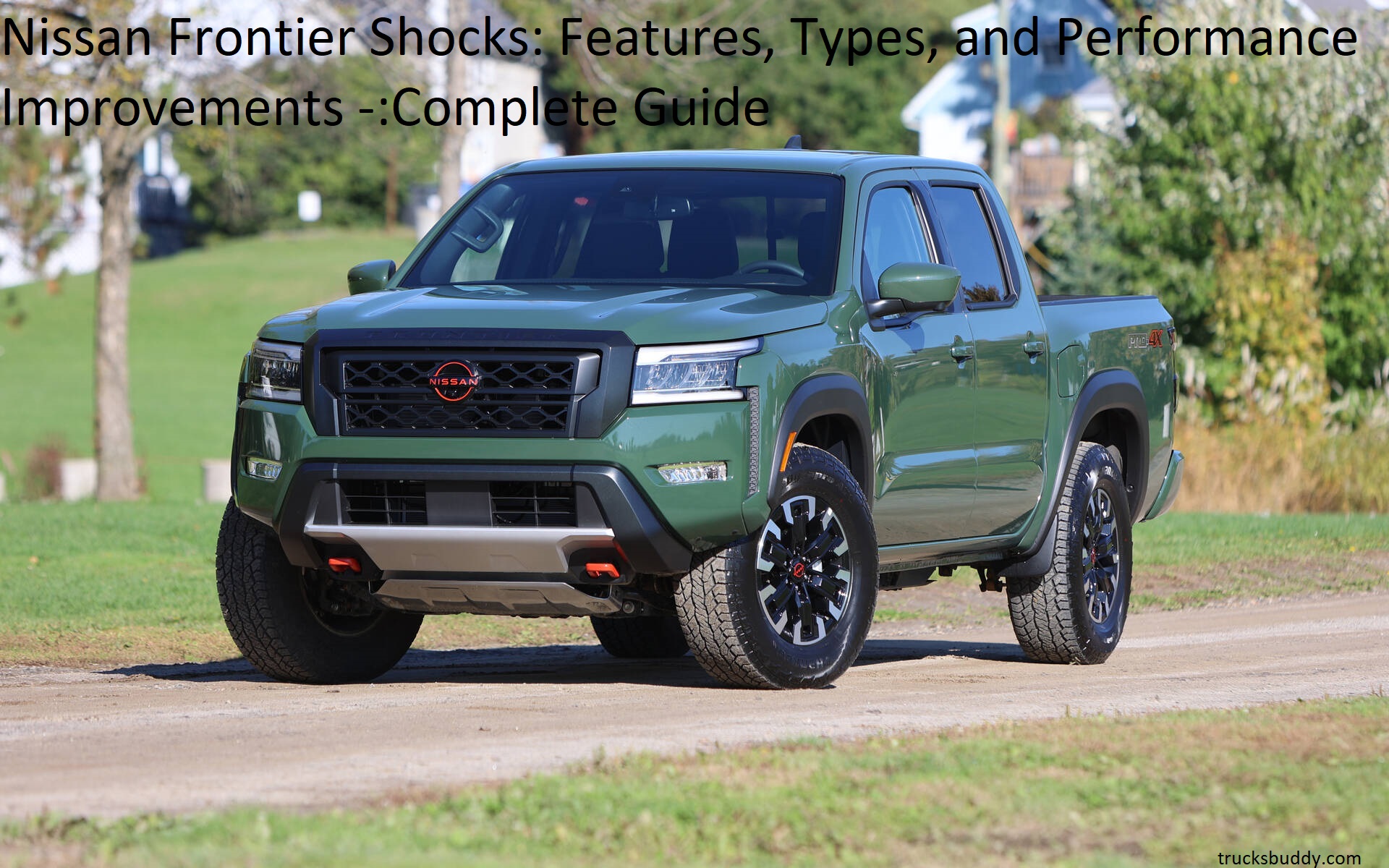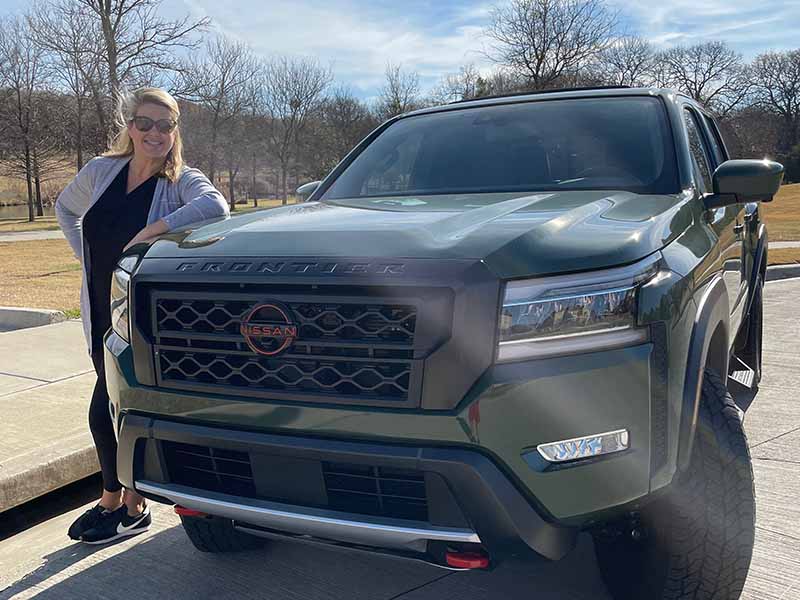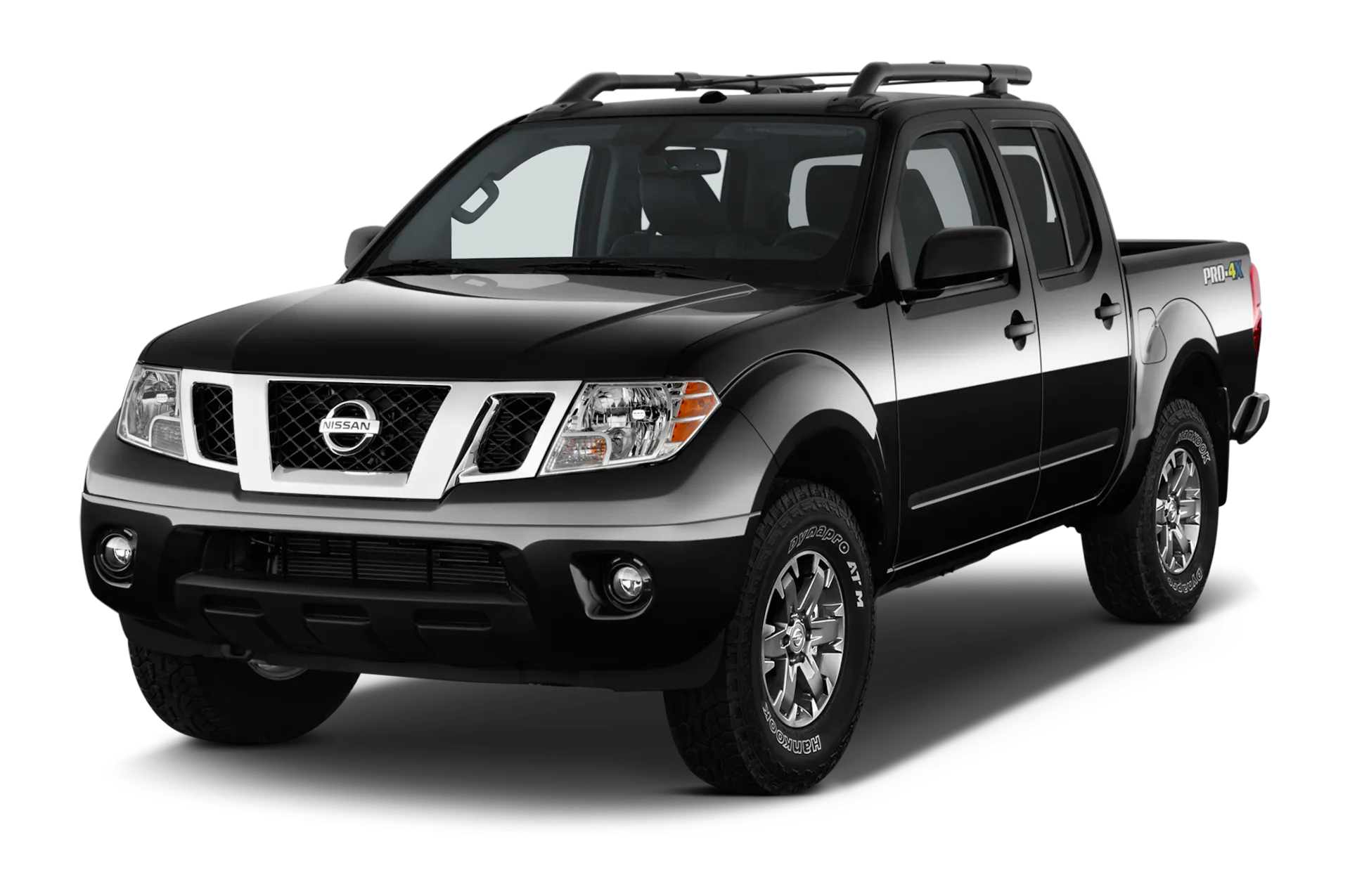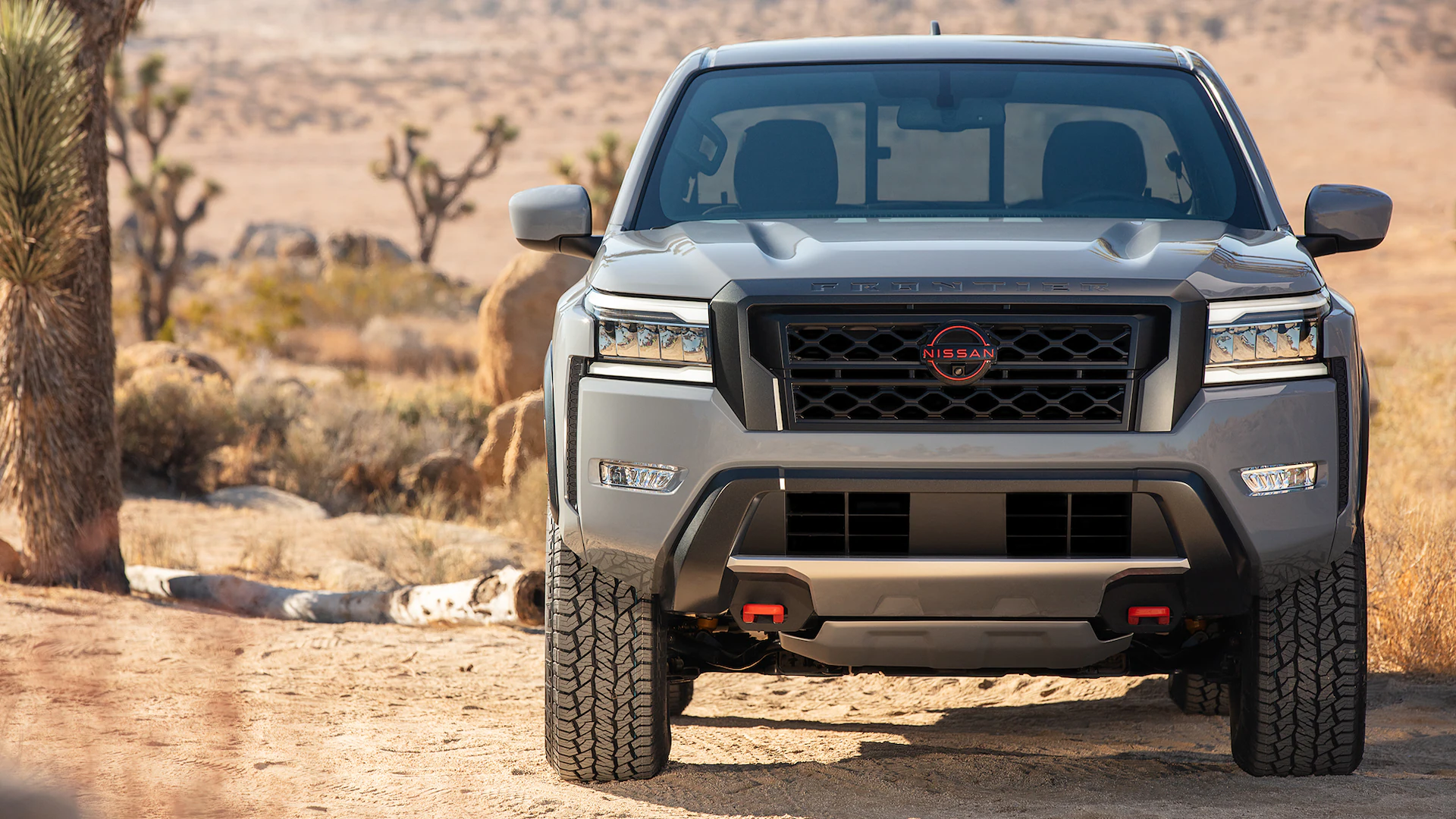Are you looking for a rock-solid suspension system for your Nissan Frontier? Well, fear not! This guide has you covered by delving deep into the world of Nissan Frontier shocks, making it easier for you to find the perfect match for your ride.
So don’t miss out on this opportunity and get ready to take your Nissan Frontier to the next level!
The Nissan Frontier is a compact pickup truck with a rugged exterior and powerful frame. It’s great for hauling cargo, commuting to work, or tackling off-road terrain. However, like any automobile, wear and tear on the shocks can lead to reduced performance and handling issues over time.
If you want to keep your Frontier in top shape for years to come, you’ll need to learn about the different features, types of shocks available for it, and how upgrading them can improve its performance. This guide will cover all that information and more so that you’re equipped with the knowledge you need to make an informed decision when it comes to selecting replacement shocks for your Nissan Frontier.

Features of Nissan Frontier Shocks
Nissan Frontier shocks are available in a variety of specifications, making them ideal choices for virtually any type of vehicle. Here is an overview of the shock absorber features that are included with Nissan Frontier shocks:
- Variable Rate Valving Technology: This feature helps deliver consistent performance, regardless of the terrain or conditions. The valving technology ensures shocks react in harmony with varying speeds and conditions, creating a smoother ride.
- Rigid Mono-Tube Design: A mono-tube design allows for the dampening fluid to be contained within one tube for increased oil control, allowing for more consistent performance. In addition, this rigid construction creates better steering response and improved durability.
- Custom-tuned Oils: Nissan utilizes specially formulated oils to provide an improved dampening performance and help absorb road noise and vibration more effectively.
- Corrosion and Salt Spray Resistance Treatment: All Nissan Frontier shocks come with a corrosion and salt spray resistance treatment to help protect from rusting and other related symptoms caused by harsh climates or road salt usage.
Material construction
To assess the best option to improve ride and handling performance of your Nissan Frontier, it is important to understand the materials commonly used in shock absorbers.
The majority of shocks are constructed from metal materials, the most common being steel. Steel shocks are strong and durable, providing lasting performance life; however, they can be too stiff for daily commuting on bumpy roads. That’s why many performance-focused drivers opt for aluminum for better flex and tuning capability. Aluminum shocks are lighter than steel, offer improved heat dissipation which is essential for street or track use, adjustable dampening capabilities for truly custom tuning, and superior suspension response time over steel in certain applications. They are also typically more expensive than steel due to the added features that come with aluminum options.
Not all aluminum options are created equal: Some feature anodized finishes while others provide a zinc-plated coating. An anodized finish is superior to a plain or ordinary zinc plating because it improves corrosion protection as well as better heat dissipation properties due to its additional coating process — but it’s more expensive because of that extra layer of protection provided by its anodized finish process. It’s important to consider all factors when researching shock absorption options for your Nissan Frontier truck!
Design
The design of the Nissan Frontier shocks varies depending on the make and model of the truck. There are two main types: extended length shocks, also known as remote reservoir shocks, and adjustable length shocks, often referred to as standard-type coilover shocks. Each has its own advantages depending on your specific application and budget.
Extended-length shocks feature a remote reservoir connected to the shock body via a hose or line. This system allows extra oil to be stored away from the actual shock assembly allowing for greater control under extreme conditions; off roading, heavy loads or during times of high strain operation like hauling heavy payloads. They feature an internal bypass system that allows for different levels of dampening or tuning with changing load requirements and varying terrain conditions. For the best dampening performance in highly demanding applications, extended-length shocks should be considered.
Adjustable-length coilover Nissan Frontier Shocks are designed for vehicles with lower payload requirements and general driving circumstances such as highway driving or light off roading duties. These type shock absorbers come in both front and rear designs so you can customize your suspension setup according to your needs. A screw adjuster lets you precisely set your ride height at any level you need quickly and easily while allowing you more control over ride quality in varying terrain conditions because they come in different levels of stiffness ranging from soft to hard depending on your preference or weight requirements.
Compatibility with Nissan Frontier models

When shopping for Nissan Frontier shocks, it is important to determine which models are compatible with your specific model. Generally, shocks for the Nissan Frontier will fit a wide range of models from 2005 onwards. However, it is always best to double-check the compatibility of your shocks before purchasing. Some of the most popular Nissan Frontier models are discussed below:
2005-2015 Nissan Frontier: The standard shock absorbers offered for this generation of the Nissan Frontier come with a limited lifetime warranty and provide improved handling and ride quality.
2016+ Nissan Frontier: The newly released generation of the Nissan Frontier features adjustable shocks, allowing drivers to adjust suspension heights multiple times to find their ideal ride quality. Additionally, these adjustable shock absorbers allow drivers versatility when taking on off-road terrain as they can easily adjust the shock performance depending on conditions.
Twin Cabs and crew cab variants from 2016+ also feature specific shocks designed for increased ground clearance and better off-roading capabilities. In contrast to their enterprising predecessors, these later iterations show an emphasis on comfort over raw performance – allowing drivers enjoy a smoother drive even in rough terrain conditions.
Durability
Durability is an important factor when it comes to buying shocks for your Nissan Frontier. Fortunately, Nissan shocks come in a number of varieties that offer varying levels of durability. Steel shocks provide the most long-lasting performance and are designed to endure the toughest terrains and conditions. They also offer greater shock travel, which is beneficial if you want a more comfortable ride while off-roading.
Other shocks like monotube or twin tube varieties are available as well and differ in the amount of oil they contain and how resistance is managed. Monotubes can handle large amounts of oil, thus making them very durable, but they do not provide as much control or stability compared to twin tubes. Twin tubes offer better control due to their two layers providing a larger surface area than monotubes but they lack durability compared to steel ones as they are less able to withstand extreme terrains and conditions.
Performance Improvements for Nissan Frontier Shocks
Nissan Frontier shocks can be further tuned to improve performance. By making alterations to the configuration of the shock absorber, it is possible to not only increase the amount of comfort you will experience while driving, but also improve upon your steering control and stability while driving on rough terrain. Some essentials to consider before making such changes are listed below:
-Valving: Shock valving refers to the rate at which the fluids within the shock move from one chamber of the shock absorber to another. When carefully matched with spring rates, Nissan Frontier shocks can be tailored for your specific needs.
-Spring Rates: Spring rates refer to how stiff or soft a spring is when compressed or extended. For example – a stiffer spring or shock has a higher spring rate and inversely, softer springs have lower spring rates and tend to compress more easily than stiffer ones when weight is applied.
-Mounting Location: In order to maximize performance improvements from Nissan Frontier shocks, attention should be paid towards their placement on the vehicle body. Depending on where they are situated they may produce differing results and can even lead to unexpected qualities such as reduced sway during cornering or increased body rigidity during motion.
-Shock Type: The type of Nissan Frontier shocks you select will also determine their functioning capabilities – depending on whether they are monotube or twin tube this may influence overall performance levels. Monotube shocks work best in extreme off road conditions while twin tubes produce great results under normal driving conditions but may need extra tuning for certain environment types like desert hills bracing extreme temperatures and hardships associated with it.
Upgrading to better quality shocks
Upgrading from your stock shocks to better quality shocks can greatly improve your Nissan Frontier’s performance and ride. While the factory equipped shocks are generally reliable and are intended to provide comfortable automobile ride, upgrading to better shock absorbers can give you a more controlled driving experience. When selecting aftermarket shocks for your vehicle, it is important to keep in mind the type of terrain you will be primarily driving on and consider the installation cost involved with individual parts. By upgrading, you may get increased traction, improved braking and handling, as well as greater wheel travel for off-road use.
Different levels of aftermarket shock absorbers are available depending upon what level of performance improvement you are looking for and what size budget you have. Cheaper varieties may not offer the same level of control while higher quality shocks may be expensive but come equipped with adjustable and durable components that promise longevity and reliability.
Some examples include nitrogen or air filled dampening units that offer unmatched convenience and control over different terrain conditions; twin tube units with construction designed for improving ride characteristics; single-tube hydraulic types that offer consistent dampening over variable loads; stabilizers which provide improved steering response; adjustable options where suspension performance can be tailor made according to personal preferences; coilovers which offer wide levels of height/spring adjustments in order to reduce body roll during cornering or bouncing on uneven roads etc… By understanding these components, it is possible to choose a better suited unit according to personal needs.
Installation and Maintenance of Nissan Frontier Shocks

Installing Nissan Frontier shocks effectively requires a few basic tools including a ratchet, wrench, and/or socket set. It may also be necessary to use a jack and jack stands when changing out the shocks. The best instruction for a particular vehicle model can always be found in its factory service manual; however there are general guidelines to follow when replacing the shocks on your Nissan Frontier.
Before installing the new replacement shocks, it’s important to inspect all existing components of the suspension system for signs of damage or excessive wear. This includes checking the rubber bushings around the mounting points of the shock absorbers. In addition, it’s beneficial to lubricate all outer ends and threads with penetrating oil prior to assembly or installation.
The next step is lining up and attaching new shocks in place of old ones by aligning mounting holes in order for bolts to fit smoothly into place. Make sure that any factory-issued nuts have been transferred from old parts before attempting to install new ones. Be sure also that any washers and/or cushions used for an existing system have been replaced exactly as indicated by their instructions before reassembling any component pieces onto your new shock absorbers.
Reconnecting all detached parts should be completed prior to carefully putting tension onto each component of the suspension system through gradual tightening of each nut and bolt until torque specifications have been reached (as indicated in manufacturer’s guidelines). The final step is inspecting overall visual appearance of assembly before conducting a test drive on smoother roads or surfaces with moderate turns in order observe how well your Nissan Frontier handles its newly installed shocks on rough terrain as well as good ones!
Proper installation procedures
Proper installation of Nissan Frontier shocks is important for optimal performance and the longevity of the components. Installing shocks correctly involves three basic steps: removing the old components, preparing the new parts for installation, and properly attaching them to your vehicle.
First, park your vehicle on a level surface and open the hood. To remove the old shocks, begin by disconnecting them from their mounting points in your Nissan Frontier’s suspension system. This is usually accomplished by loosening any bolts or screws retaining them in place. The exact method will vary depending on your type of shock system, so refer to your user’s manual if necessary. Once they are free of their mounting points, carefully lower them out of your engine compartment like pulling a tube out of a bucket filled with water. Then you can disconnect any related components attached to them such as sway bar links or brake lines if necessary and discard the old parts.
Now you can use some compressed air to blow off any dirt or debris from the new shock mounts before pre-fitting it into position in your Nissan Frontier’s suspension system. Orient it as needed so that it fits properly against its mounting points with its connections lined up correctly before you begin to bolt it tightly into place using all manufacturer recommended torque values and hardware provided with each shock assembly from its manufacturer when available. After properly fitting each shock, check for proper alignment one final time before lowering the vehicle back onto all four wheels. That’s all there is to proper shock installation!
Recommended maintenance for longevity and performance
To enjoy peak performance and longevity for your Nissan Frontier’s properly adjusted shocks, regular maintenance and tuning is recommended. Basic maintenance includes checking to ensure the shock absorbers are secure, free of damage, and full of oil. Additionally, you should periodically clean the bushings to free them of dirt and debris. Regular adjustment of the dampers will help to eliminate clunking noises as well as premature wear on other components of the suspension system.
The type of vehicle you drive will determine how often shocks require replacement or tuning; however, it is recommended that you replace or adjust shocks every 25-50 thousand miles (or 40-80 thousand kilometers). For some drivers with heavy loads over rough terrain, shorter intervals may be necessary. It is important to have a professional inspect your Nissan Frontier shocks every 10-15 thousand miles (or 16-25 thousand kilometers) at the very least. They can provide an assessment regarding current performance as well as recommendations for improvements or replacements when needed.
Common issues

The Nissan Frontier series of pickup trucks is lauded for its reliable and powerful engine, as well as its comfortable interior amenities. However, it can still be affected by common issues that can decrease its performance. In order to keep your Nissan Frontier at optimal performance and maximize its life, be aware of the following common problems.
One of the most commonly encountered issues with the Frontier is premature wearing or failure of shocks or struts. When a shock is worn out, it cannot adequately dampen road conditions – meaning you lose control when you hit bumps or traverse uneven terrain. Signs that your shocks are in need of maintenance are excessive suspension noise, extra movement when cornering or braking aggressively (known as body roll,) and pronounced dipping when you make a turn or transition from acceleration to braking.
In addition to shocks, other parts known to wear out prematurely on the Nissan Frontier include air suspensions, coils and lift kits designed for off-roading duty; accompanying air compressor kits may also fail over time due to strain associated with offroad use. Also be mindful of premature wearing rotors and failure rate of transmission seals, head cover gaskets: these are all relatively minor components that require frequent attention as they suffer from normal wear and tear but can greatly reduce such performance output if left unchecked too long.
Conclusion
In conclusion, shocks for the Nissan Frontier are available in a variety of styles, including adjustable and mono-tube designs. Each will provide improved handling and a smoother ride no matter what conditions you encounter. Some shock brands offer additional features such as nitrogen-filled construction or other dampening methods, so be sure to research your options before making a purchase.
Whatever option you decide on, you can be sure that your suspension system will receive an upgrade with improved performance and comfort.
FAQ’s
What suspension does the Nissan Frontier have?
The Nissan Frontier has an independent double-wishbone front suspension and a solid axle leaf spring rear suspension.
How can I improve my Nissan Frontier?
You can improve your Nissan Frontier by upgrading its suspension, adding performance parts, installing a cold air intake, and tuning the engine.
What is Frontier Pro-4X package?
The Frontier Pro-4X package is a trim level that includes off-road features such as Bilstein shocks, skid plates, and a locking rear differential.
What is the maximum speed of a Nissan Frontier in 4X4?
The maximum speed of a Nissan Frontier in 4X4 depends on the engine and transmission, but it is typically around 100 mph.
What suspension gives the best ride?
A coilover suspension gives the best ride quality, as it provides a smooth and comfortable ride while also improving handling and performance.
How long do shocks last on Nissan Frontier?
Shocks on a Nissan Frontier typically last between 50,000 and 100,000 miles, depending on driving conditions and usage.
What are the different packages in a Nissan Frontier?
The different packages in a Nissan Frontier include the S, SV, Desert Runner, Pro-4X, and SL trims, each with different features and options.
What is the difference between a Nissan Frontier and a Nissan Frontier Pro-4X?
The Nissan Frontier Pro-4X is a trim level that includes off-road features such as Bilstein shocks, skid plates, and a locking rear differential, while the standard Frontier does not have these features.
Are Nissan Frontiers good off-road?
Yes, Nissan Frontiers are good off-road, especially with the Pro-4X package, which includes features designed for off-road driving.
What are the best years for a Nissan Frontier?
The best years for a Nissan Frontier are generally considered to be 2005-2019, as these models have proven to be reliable and durable over time.
See Also:
Best floor mats for nissan frontier 2023
Best headers for nissan frontier 2023
Best led headlight bulbs for nissan frontier 2023
Best bull bar for nissan frontier 2023
Best air filter for nissan frontier 2023

